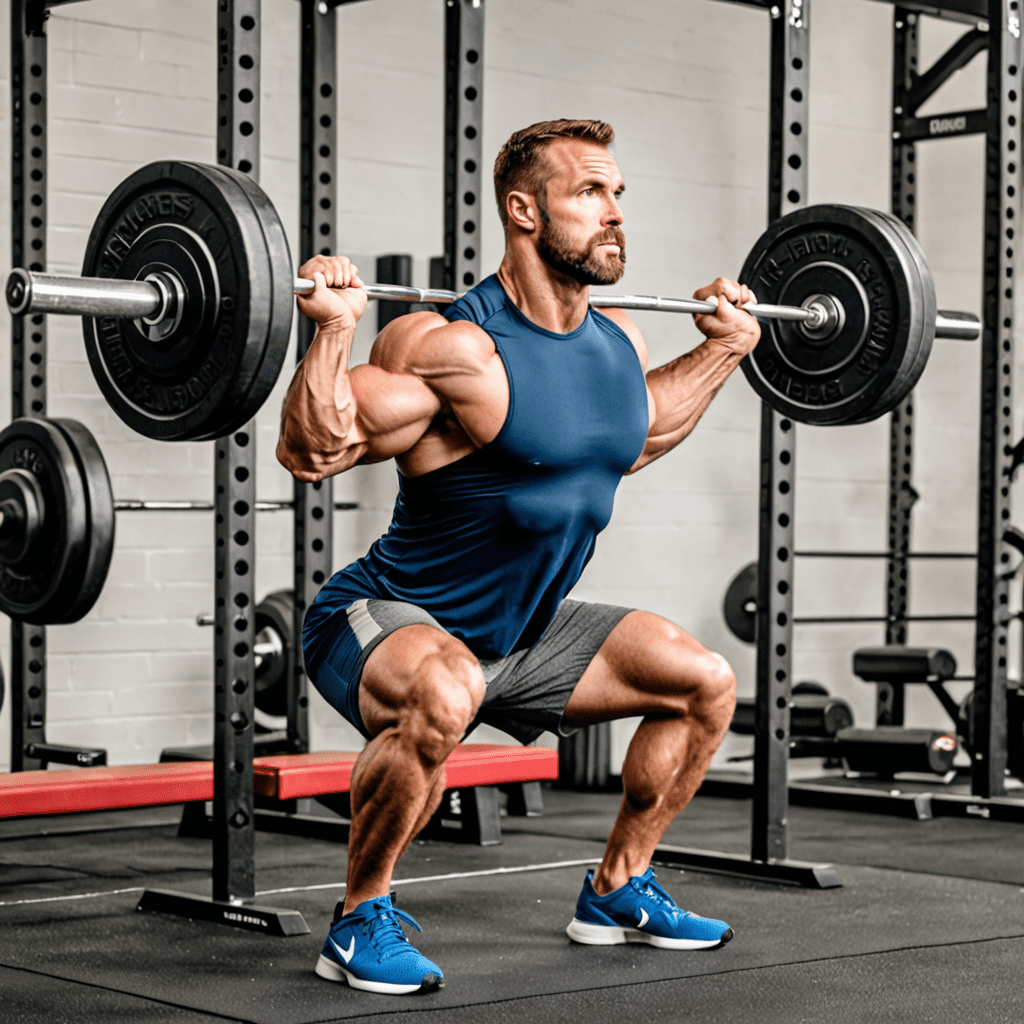
Mastering the Form: Front Squat Grip and Technique
One of the most effective exercises for building lower body strength and improving overall athleticism is the front squat. Unlike the traditional back squat, the front squat places the barbell in front of the body, challenging the core, quadriceps, and upper back. To properly execute this exercise, it is crucial to learn the correct grip and technique. In this article, we will guide you through the steps to hold a front squat correctly and provide tips to optimize your form.
The Front Rack Grip
To begin a front squat, you need to establish a solid front rack grip. This grip allows you to support the barbell comfortably and maintain proper positioning throughout the exercise. Follow these steps to achieve a secure front rack grip:
- Start with an open grip: Begin by grabbing the barbell with an open grip, with your palms facing upwards. Your hands should be shoulder-width apart or slightly wider.
Cross your arms: As you hold onto the barbell, cross your arms in front of your body. Your right hand should be placed on the left side of the barbell, and your left hand on the right side. Your arms should be parallel to the ground.
Create a shelf: Next, raise your elbows high, creating a shelf for the barbell to rest on. The barbell should be resting across the top of your shoulders and the front of your deltoids. It should not be touching your throat or collarbone.
Engage your core: To ensure stability, engage your core muscles by pulling your belly button in towards your spine. This will help you maintain an upright posture throughout the exercise.
Technique and Execution
Now that you have established a proper front rack grip, it’s important to focus on your technique and execution during the front squat. Follow these steps to ensure you perform the exercise safely and effectively:
- Set your feet: Begin by standing with your feet shoulder-width apart, toes slightly turned out. This will allow for a stable base of support.
Maintain an upright posture: Throughout the front squat, it is crucial to maintain an upright posture. Keep your chest up, shoulders back, and spine neutral. Avoid rounding your back or leaning forward excessively.
Initiate the squat: To begin the squat, initiate the movement by bending at the knees and hips simultaneously. Lower your body until your thighs are parallel to the ground or slightly below. Keep your weight on your heels and maintain balance throughout the exercise.
Drive through your heels: As you rise from the squat, focus on driving through your heels. This will help you engage your quadriceps, glutes, and hamstrings effectively. Avoid pushing through your toes, as this can lead to imbalances and potential injury.
Breathe and brace: Proper breathing and bracing techniques are crucial for maintaining stability and core engagement during the front squat. Take a deep breath before descending into the squat, and brace your core by contracting your abdominal muscles. Exhale as you rise from the squat.
Progress gradually: As with any exercise, it’s important to start with lighter weights and gradually increase the load as you become more comfortable and confident with the front squat technique. Focus on mastering your form and building strength before adding more weight.
Tips for Optimal Front Squat Performance
To optimize your front squat performance and prevent injury, consider implementing these additional tips:
- Start with mobility exercises: Before attempting front squats, incorporate mobility exercises that target your ankles, hips, and thoracic spine. This will help you achieve the necessary range of motion for the exercise.
Warm up properly: Prior to your workout, perform a dynamic warm-up routine to increase blood flow and prepare your body for the demands of the front squat. Include exercises such as lunges, squats, and hip openers.
Practice front squat variations: Once you have mastered the basic front squat, you can experiment with variations such as the goblet squat, single-arm front squat, or front squat with a pause. These variations can add variety to your training routine and target specific muscle groups.
Seek guidance from a professional: If you are a beginner or unsure about your form, it is highly recommended to seek guidance from a certified fitness professional. They can provide personalized feedback, correct any mistakes, and ensure your technique is safe and effective.
Incorporate accessory exercises: To further enhance your front squat performance, consider incorporating accessory exercises that target the muscles involved in the movement. Exercises such as lunges, step-ups, and Romanian deadlifts can help strengthen your legs and improve stability.
FAQ
Q: Can I use wrist wraps for a front squat?
A: While some individuals may find wrist wraps helpful for alleviating discomfort or enhancing their grip during a front squat, they are not necessary for everyone. It is recommended to focus on improving wrist flexibility and mobility through stretching exercises rather than relying solely on wrist wraps.
Q: Is the front squat more effective than the back squat?
A: Both the front squat and back squat are effective exercises for building lower body strength. The choice between the two depends on individual preference, training goals, and biomechanics. It is beneficial to incorporate both variations into your training routine for well-rounded development.
Q: What if I have difficulty maintaining an upright posture during the front squat?
A: If you struggle to maintain an upright posture during the front squat, it may be due to limited ankle mobility, tight hip flexors, or weak core muscles. Incorporating exercises that target these areas, such as ankle stretches, hip flexor stretches, and core strengthening exercises, can help improve your form over time.
In conclusion, mastering the front squat grip and technique is essential for maximizing the benefits of this powerful exercise. Focus on achieving a secure front rack grip, maintain proper posture throughout the movement, and follow the given tips to optimize your front squat performance. With practice and consistent effort, you can develop strength, stability, and improve your overall fitness.


